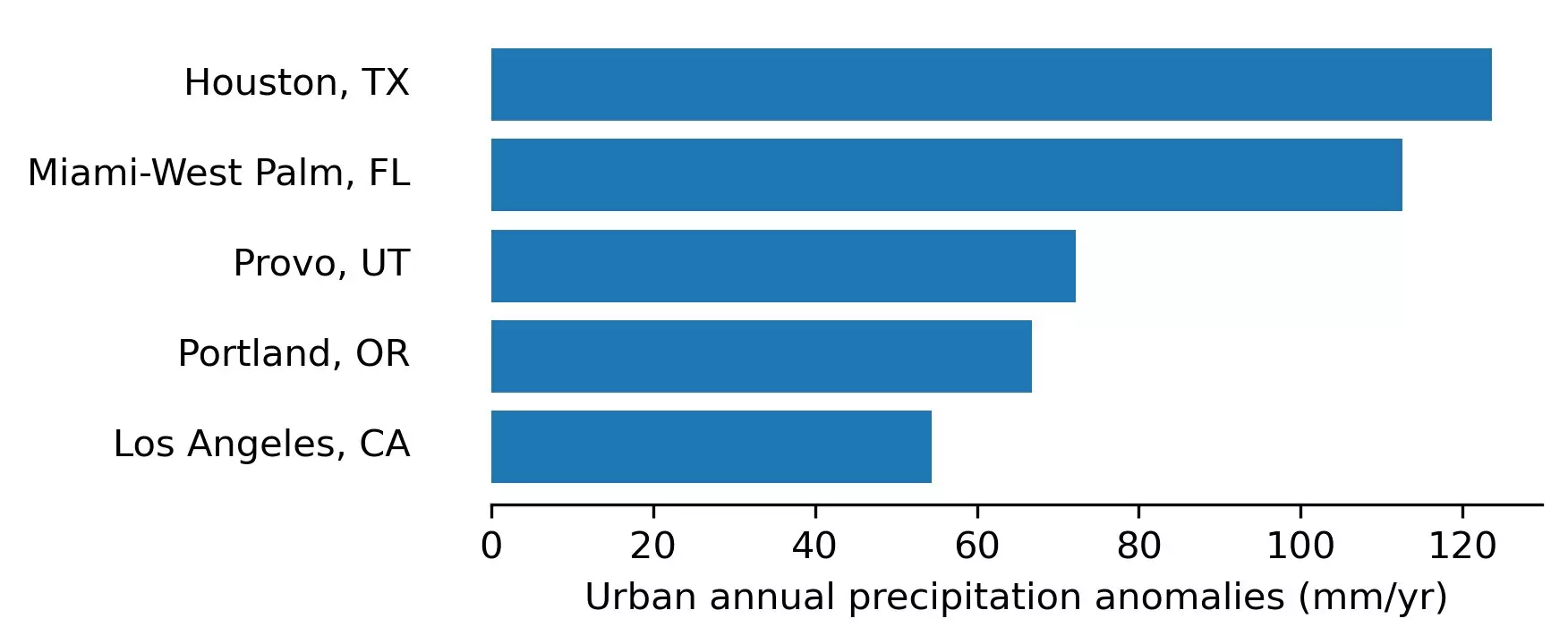Urbanization has transformed landscapes, lifestyles, and even weather patterns across the globe. While discussions often center around the heat generated by vast urban areas—commonly referred to as the urban heat island effect—the impact of urbanization on precipitation, termed the urban precipitation anomaly, is a lesser-known but equally vital phenomenon. This article explores the emerging knowledge surrounding urban precipitation anomalies, their implications for cities, and the necessity for adaptive strategies in an era increasingly marked by climate change.
The urban heat island effect is a well-studied consequence of urbanization, where cities experience elevated temperatures compared to their rural surroundings. However, the focus has often overshadowed a critical counterpart—the urban precipitation anomaly, which describes how urban landscapes can influence rainfall patterns. Recent findings from researchers at The University of Texas at Austin illustrate that over 60% of cities examined globally receive more annual rainfall than their rural counterparts. The study serves as a wake-up call to city planners, meteorologists, and climate scientists alike.
Through a meticulous examination of precipitation data from 1,056 international cities between 2001 and 2020, researchers accurately quantified the extent of urban precipitation anomalies, revealing not just isolated cases but a global trend. For example, Houston experiences an average increase of nearly five inches of rainfall yearly compared to surrounding areas, highlighting an alarming trend toward intensified precipitation in urban settings.
Mechanics of Urban Rainfall Increase
One of the intriguing aspects of the urban precipitation anomaly is its underlying mechanics. The essential analogy of a sponge aptly illustrates this phenomenon; urban areas seem to collect rainfall, which is then concentrated rather than uniformly distributed. This concentration is influenced by factors such as building height and density, which result in altered wind patterns that enhance upward air motion, vital for cloud formation and precipitation.
As wind is hindered by tall structures, air that ordinarily would disperse is directed toward the city core. The resulting convergence of air leads to enhanced condensation, creating scenarios for heavier rainfall. This phenomenon is particularly marked in cities with large populations, as density intensifies atmospheric interactions that contribute to increased precipitation.
Global Patterns of Urban Precipitation
Diving deeper into the findings, researchers identified cities around the world significantly impacted by the urban precipitation anomaly—some in tropical regions, such as Ho Chi Minh City and Kuala Lumpur, while others span diverse climates like Lagos and the Miami metropolitan area. Their study offers a comparative perspective across various climatic zones, highlighting that cities in hotter and wetter climates tend to exhibit more pronounced precipitation enhancements.
In contrast, some urban areas, such as Seattle and Jakarta, display diminished rainfall relative to their rural counterparts, primarily due to geographical influences such as surrounding mountains that affect precipitation patterns. This dichotomy emphasizes that urban precipitation dynamics are complex and often influenced by both geographical positioning and urban infrastructure.
An underlying correlation draws attention to the role of population in precipitation anomalies. Larger urban populations contribute to the construction of denser buildings, increased heat generation, and consequently more significant alterations to local weather patterns. According to co-author Liang Yang, urban areas harbor more greenhouse gas emissions, which enhance city temperatures and subsequently affect precipitation patterns.
This relationship demonstrates the intricate interplay between urbanization factors and natural weather systems, highlighting the importance of considering population dynamics in urban planning and management. As cities continue to grow, understanding the climatic implications becomes increasingly crucial.
Given the increasing frequency and intensity of heavy rainfall and the resultant flash flooding, cities must prioritize innovative solutions in their infrastructure and urban planning. As Yang indicates, the intersection of more rainfall and impervious surfaces typical of urban environments creates a perfect storm for flooding.
It necessitates the development of smarter urban systems—venues for rainwater harvesting, expanding green roofs, increasing permeable surfaces, and transforming stormwater management practices become imperative.
By recognizing and addressing the multifaceted relationships between urban environments and precipitation patterns, cities can take steps to mitigate risks posed by urban precipitation anomalies. As demonstrated by the findings from Texas, a proactive approach will be essential for fostering resilient urban communities in an era of rapid climate change.
The urban precipitation anomaly offers a poignant reminder of how interconnected our urban environments are with the atmosphere. As cities globally continue to grow and evolve, understanding the nuances of these weather disruptions will be crucial for developing adaptive strategies. Urban planning must evolve to prioritize not only the prevention of flooding but also sustainability to manage the inevitable effects of climate change. By approaching urbanization with foresight, we can build not only more resilient cities but also a sustainable future for generations to come.


Leave a Reply